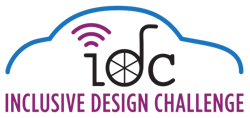U.S. DOT seeking automated vehicle solutions in Inclusive Design Challenge
The U.S. DOT this week opened Stage I of the Inclusive Design Challenge, a national prize competition seeking design solutions to make future automated vehicles (AVs) more accessible to people with disabilities.
The department says Stage I of the challenge will be open for submissions from until October 30, 2020. The Inclusive Design Challenge seeks innovative design solutions that can enable people with physical, sensory, and cognitive disabilities to use AVs to access jobs, healthcare, and other critical destinations. During two stages of competition, teams will compete to earn a portion of a $5 million prize purse.
Teams from academic and research institutions, the business sector, and technology companies are invited to submit entries. Solutions may include hardware or software ideas intended to enable independent use of AVs by people with disabilities. Stage I of the Challenge requests written proposals describing the design solution. Up to 10 semifinalists will be selected and awarded $300,000 each based on their proof-of-concept ideas. In Stage II, semifinalists will compete for a portion of the remaining prize purse by developing prototype demonstrations of their concepts. U.S. DOT anticipates awarding Stage II prizes in summer 2022.
As part of the challenge, U.S. DOT is also encouraging teams to seek input from the disability community, industry, and research community. By ensuring that AVs are designed to be inclusive, the department expects that the challenge will help to enhance future access to critical services, including medical care, for people with disabilities. U.S. DOT says that while this is a vital need at all times, the current COVID-19 pandemic makes it particularly evident.
U.S. Transportation Secretary Elaine Chao announced nearly $50 million in new initiatives to expand access to transportation for people with disabilities, older adults, and individuals of low income at the Department’s Access and Mobility for All Summit in October 2019. Over the past three years, U.S. DOT says it has increased investment in accessibility-related research by approximately 50%.
-------
SOURCE: U.S. DOT
